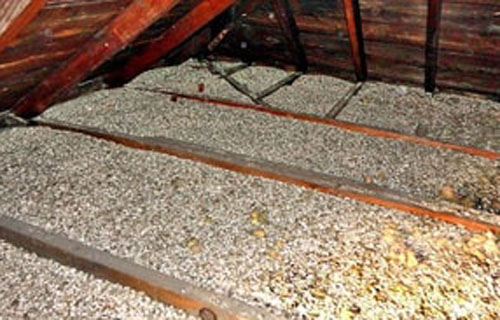How to Determine Whether There Is Asbestos Attic Insulation in Your House

The cheapness and great mechanical properties of asbestos have made this material one of the manufacturers' favorite until its dangerous health effects were discovered. This toxic mineral was a popular alternative to other materials during the last century and, as a consequence, it can still be found in older homes, whether as a part of the walls and roofs or in various household appliances.
Attic insulation may contain asbestos too, and just like the other asbestos-containing materials and products, it entails a great risk of developing severe diseases such as mesothelioma or lung cancer, especially if it is in poor condition. Therefore, knowing how to identify asbestos attic insulation and how to safely remove it from your house is very important.
Types of asbestos attic insulation
Vermiculite insulation usually has a grey or brown coloration and might look like small pebbles or popcorn. It is known to be very dangerous and if suspected to be present in a house, it is recommended to limit exposure and have a sample of it tested by a certified laboratory.
One of the most common tests which can reveal the existence of vermiculite in attic insulation is the Cincinnati method. This procedure is based on the mineral's property to float when placed in water, in contrast with asbestos-containing materials, which sink. However, sometimes the result can prove to be a false negative, since asbestos can be found in floating vermiculite as well. This is why some people suggest removing the troublesome insulation straight away if any suspicions arise.
Wool-like insulation might also contain asbestos. Although most varieties of this type of insulation are asbestos-free, there is a chance that some of them are dangerous. Consequently, if your attic insulation looks like wool, you should have a sample tested in order to make sure you are safe within your home.
Asbestos might seem like a problem of the old times, but little do most people know that it is still present in a lot of homes across the U.S. The attic is just one of the many places where this hazardous material can lurk and this is why any renovation project should be preceded by appropriate testing. Finally, it is essential that the potential removal of attic insulation is done by a licensed abatement company so as to avoid contaminating the whole house.
